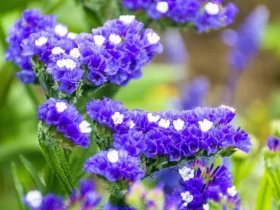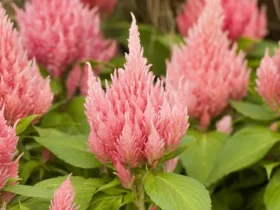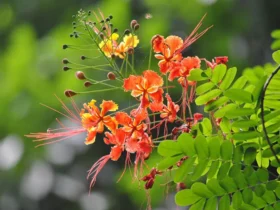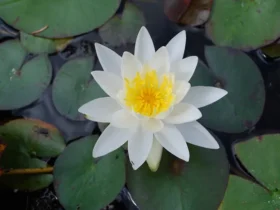In the enchanting world of flowers, few blooms can rival the charm and diversity of the fuchsia (Fuchsia spp.). Known for their vibrant hues, elegant form, and unique pendulous blooms, fuchsia flowers have captivated the hearts of gardeners and flower enthusiasts around the globe. In this article, we delve into the fascinating world of fuchsia flowers, exploring their origins, characteristics, and the joy they bring to gardens and landscapes.
Origin and Diversity
The fuchsia flower is native to Central and South America, where it thrives in the temperate and subtropical regions. It was first discovered in the 17th century by the French botanist Charles Plumier, who named the flower “Fuchsia” in honor of the renowned German botanist Leonhart Fuchs.
The genus Fuchsia encompasses over 100 species and numerous hybrid varieties, each presenting a delightful array of colors, shapes, and sizes. These flowers come in various shades of pink, red, purple, white, and even bicolor combinations, creating a kaleidoscope of elegance in any garden setting.
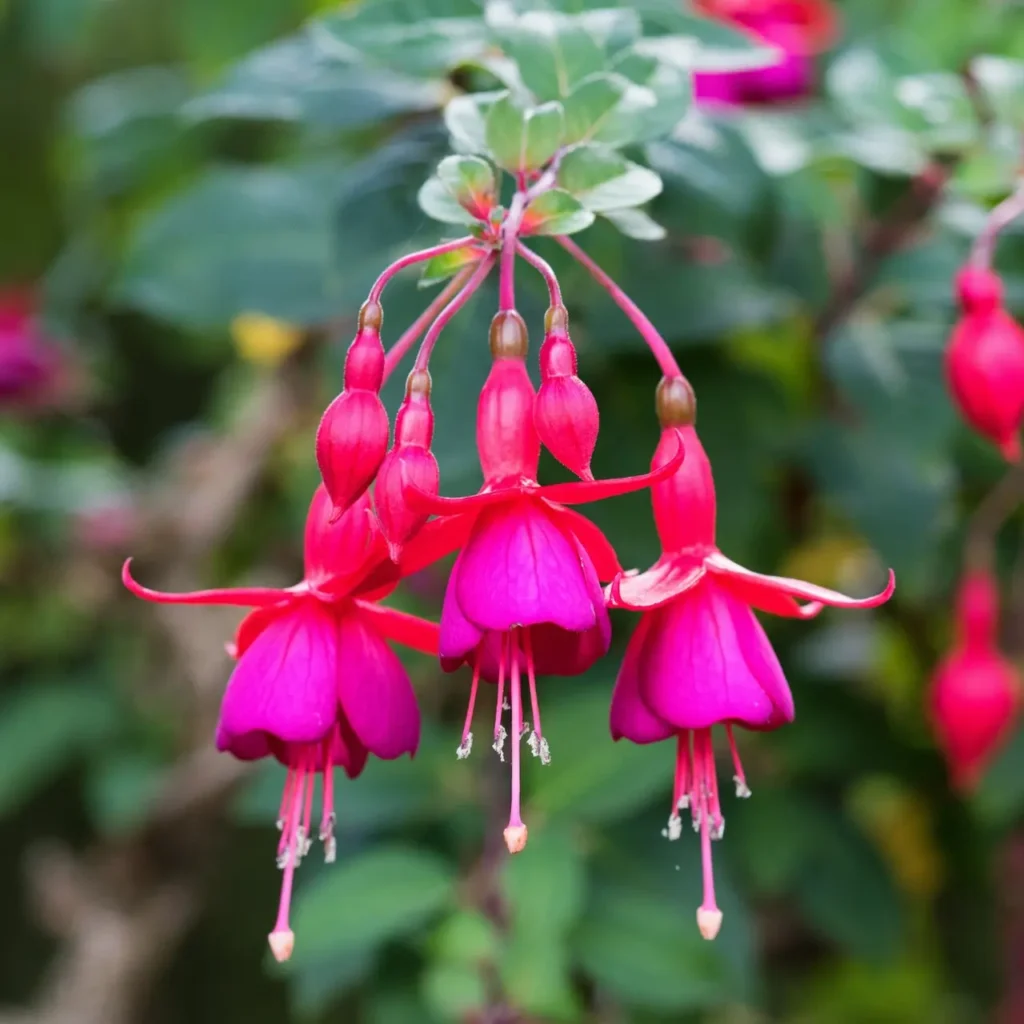
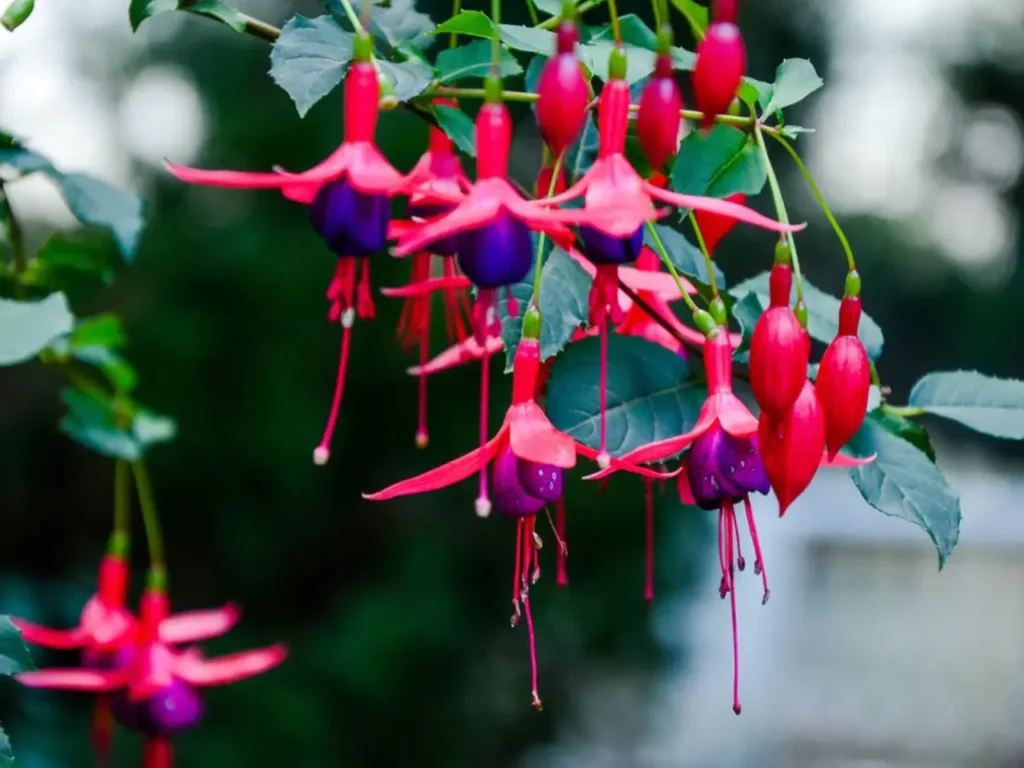


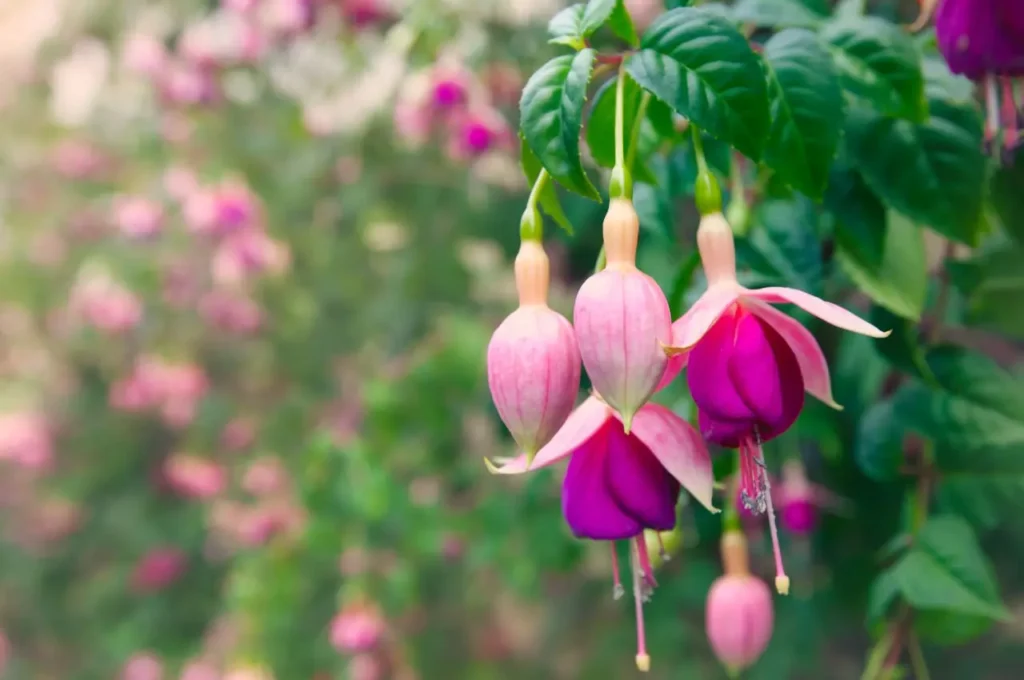
Color of Fuchsia Flowers
Fuchsia flowers are known for their vibrant and eye-catching colors. They come in various shades and combinations, making them popular choices for adding a splash of color to gardens and landscapes. The most common colors of fuchsia flowers include:
- Magenta: The most typical and iconic color of fuchsia flowers is a bright magenta or purplish-red hue. This vibrant color is what gives the plant its name, as it resembles the robes worn by the 16th-century botanist Leonhart Fuchs, after whom the genus Fuchsia is named.
- Pink: Fuchsia flowers also come in various shades of pink, ranging from soft pastel pinks to deeper and richer pink tones.
- Purple: Some fuchsia cultivars may exhibit shades of purple, which can range from light lavender to deep, dark purple.
- White: While less common, there are some fuchsia varieties that produce white flowers. These have a delicate and elegant appearance.
- Bi-colors: Many fuchsia flowers display a striking bi-color pattern, where the outer petals are a different color than the inner petals. For example, a common bi-color combination is a magenta outer petal with a lighter pink or white inner petal.
- Other shades: Some fuchsia hybrids and cultivars may display less common colors, such as shades of orange, coral, or even blue-tinged flowers.
Fuchsia plants are known for their pendulous, tubular flowers that often hang in clusters, creating a beautiful display of color. They are native to Central and South America and have been widely cultivated as ornamental plants around the world. Fuchsia flowers are popular choices for hanging baskets, containers, and garden borders, adding a burst of color and attracting pollinators like hummingbirds and butterflies.

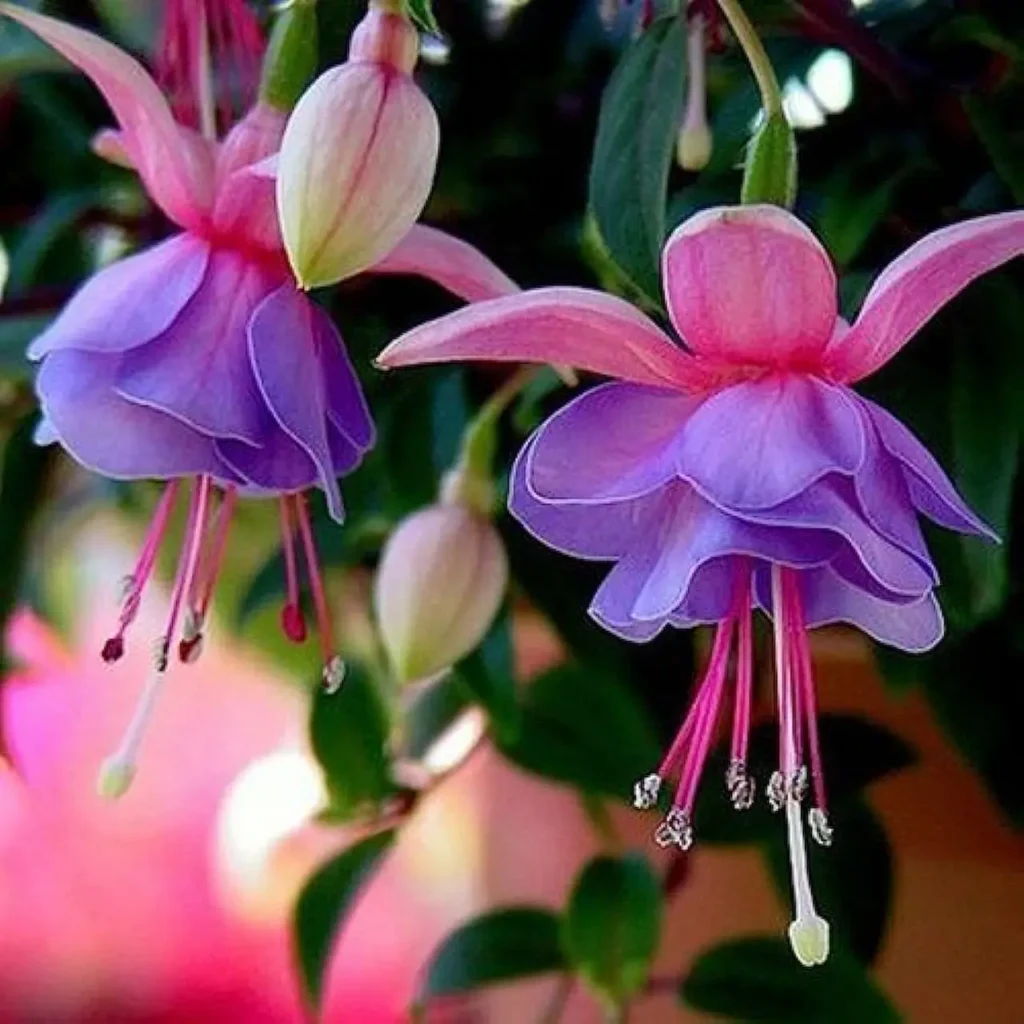
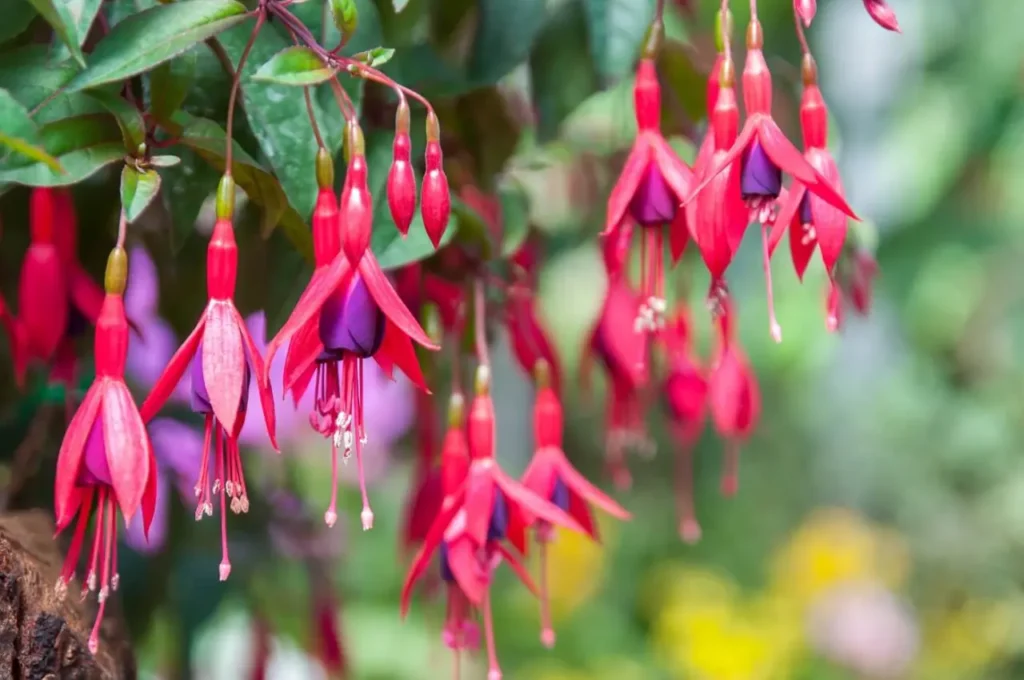

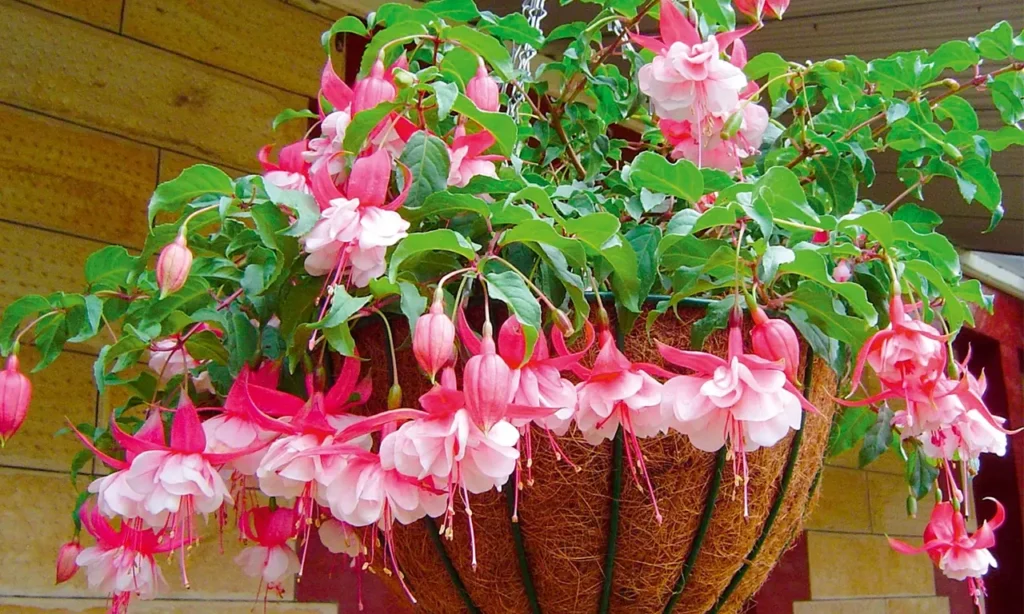
Characteristics of Fuchsia Flowers
Fuchsia flowers are renowned for their graceful pendulous form, with drooping sepals surrounding a tubular corolla. The sepals often feature a contrasting color from the corolla, adding depth and drama to the overall appearance of the flower.
The corolla of fuchsia flowers is where their true charm lies. The tubular shape, adorned with delicate flared petals, beckons hummingbirds and butterflies to sip their nectar, making fuchsia flowers a favorite among pollinators.
Growth Habits and Cultivation
Fuchsia plants exhibit various growth habits, including trailing, bushy, and upright forms, making them versatile additions to gardens and hanging baskets alike. Their trailing varieties gracefully cascade over the edges of containers, creating a cascading waterfall of blooms, while bushy types provide a profusion of flowers, creating a burst of color and life.
When it comes to cultivation, fuchsia plants thrive in rich, well-draining soil and prefer partial shade or filtered sunlight. While they require regular watering, it is essential to avoid waterlogging the roots, as fuchsias are susceptible to root rot. Regular deadheading (removal of spent blooms) promotes continuous blooming, allowing gardeners to enjoy the fuchsia’s captivating beauty throughout the growing season.
Fuchsia Enthusiasts and Competitions
Fuchsia flowers have inspired a devoted community of enthusiasts, including breeders and collectors, who seek to preserve and enhance the diversity of fuchsia species and hybrids. Fuchsia societies and clubs around the world host competitions and exhibits to showcase the most exquisite and unique fuchsia cultivars, further fueling the passion for these enchanting blooms.
Cultural Symbolism and Significance
Fuchsia flowers hold symbolic significance in various cultures. In Victorian flower language, fuchsia symbolizes elegance, refinement, and a taste for beauty. In some Native American traditions, the fuchsia is associated with harmony, grace, and the connection between humans and nature.

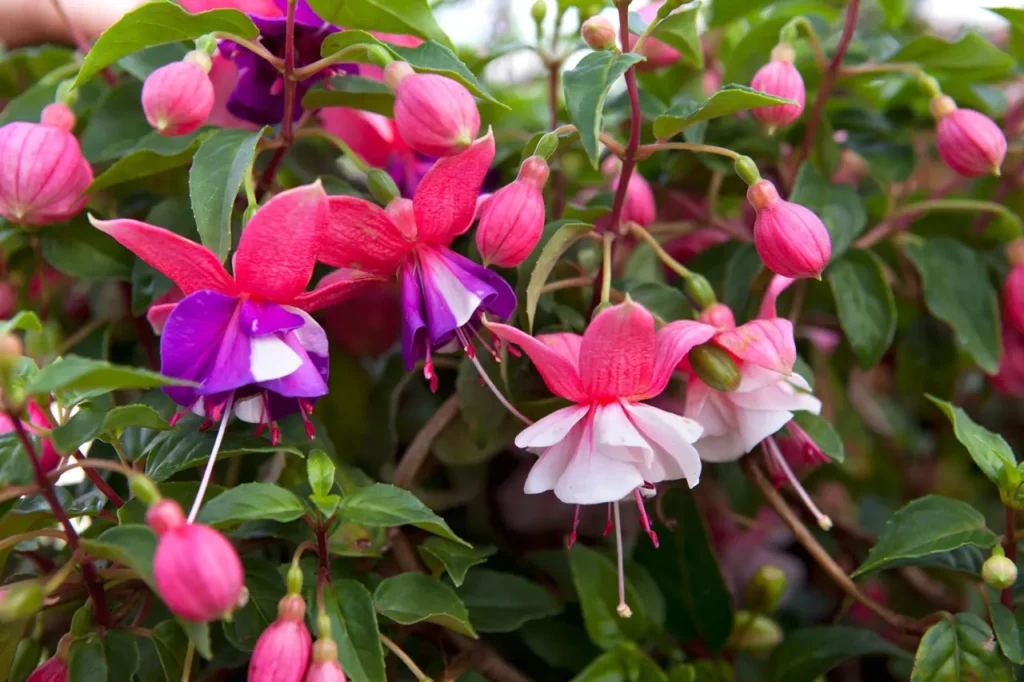


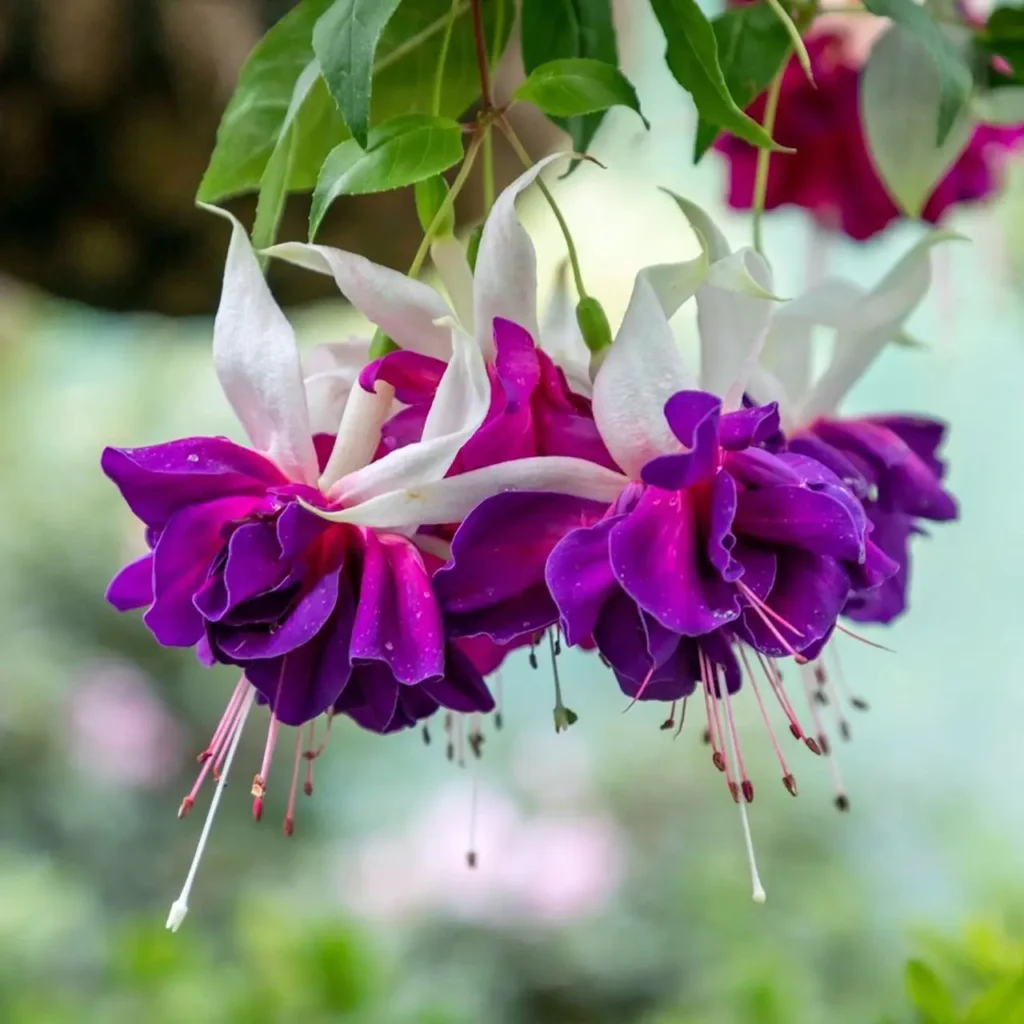
Type of Fuchsia Flowers
Fuchsia is a genus of flowering plants that includes a wide variety of species and hybrids. Fuchsia flowers are known for their pendulous, tubular flowers with vibrant colors, making them popular choices for gardens, hanging baskets, and containers. Here are some common types of Fuchsia flowers:
- Fuchsia magellanica: Also known as the “Hardy Fuchsia,” this species is native to South America and is one of the hardiest Fuchsia varieties. It produces small, pendant flowers in shades of pink and purple.
- Fuchsia triphylla: This species is native to the Caribbean and has smaller, more compact flowers. The flowers are tubular and typically bright red or orange-red in color.
- Fuchsia boliviana: Native to Bolivia and Peru, this species has elongated, trumpet-like flowers that can be up to 4 inches long. The flowers are usually bright red with purple or pink tips.
- Fuchsia hybrida: This group includes various hybrid varieties that have been bred for their diverse colors and forms. Hybrid Fuchsias can come in a wide range of colors, including red, pink, purple, white, and bi-colored combinations.
- Fuchsia procumbens: Native to New Zealand, this species is unique among Fuchsias as it is a creeping, ground-covering plant. The flowers are small and yellow-green, with contrasting red sepals.
- Fuchsia regia: Also known as the “Royal Fuchsia,” this species has large, pendulous flowers with bright red corollas and deep purple sepals.
- Fuchsia paniculata: Native to Mexico and Central America, this species has slender, elongated flowers that can be up to 2 inches long. The flowers are typically red or orange-red in color.
- Fuchsia microphylla: This species is native to New Zealand and has small, delicate flowers in shades of pink, purple, or red. The leaves of this Fuchsia are also quite small.
- Fuchsia fulgens: Native to Mexico, this species has long, tubular flowers with bright orange-red corollas and red sepals.
- Fuchsia x hybrida ‘Gartenmeister Bonstedt’: This is a popular hybrid variety with orange-red flowers and dark green leaves. It is known for its long-lasting blooms and attractive foliage.
These are just a few examples of the diverse and beautiful Fuchsia flowers. With so many species and hybrids available, Fuchsias offer a wide range of colors, shapes, and sizes, making them a favorite choice for adding vibrant colors to gardens and landscapes.


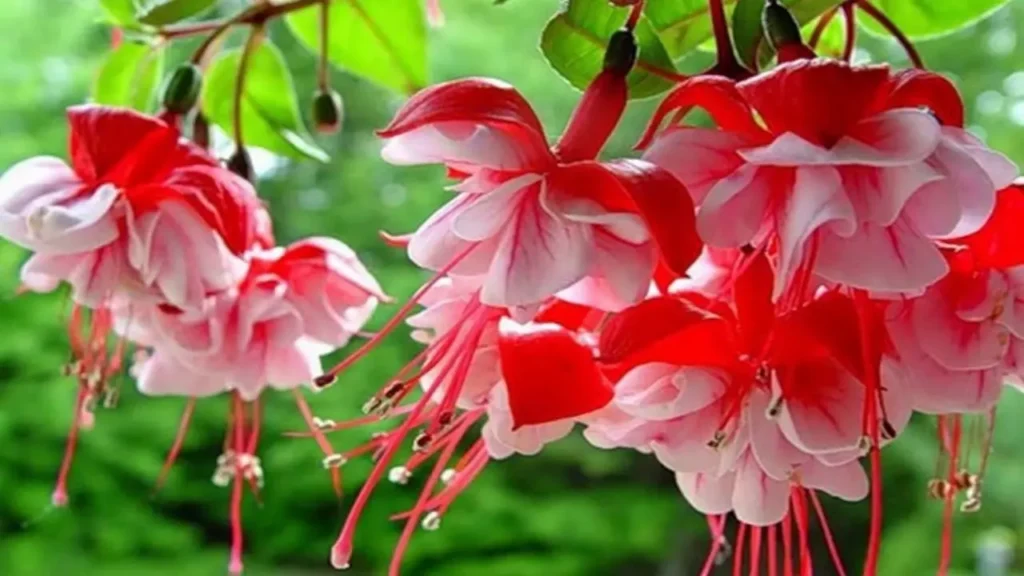
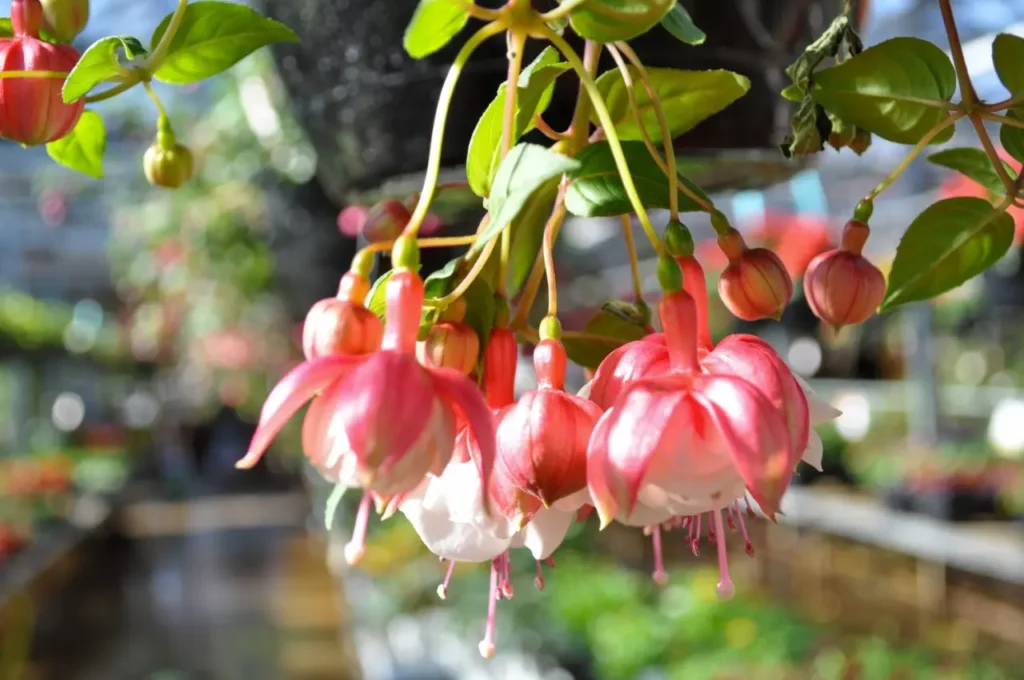

Conclusion
The fuchsia flower, with its vibrant colors, elegant form, and delightful variety, continues to enchant and inspire gardeners, artists, and nature lovers alike. Whether cascading from hanging baskets or adorning garden beds, the fuchsia’s alluring charm adds a touch of elegance and whimsy to any landscape. As we celebrate and cultivate these graceful blooms, we pay homage to the brilliance of nature’s artistic palette, cherishing the beauty and diversity that fuchsia flowers bring to our world.


